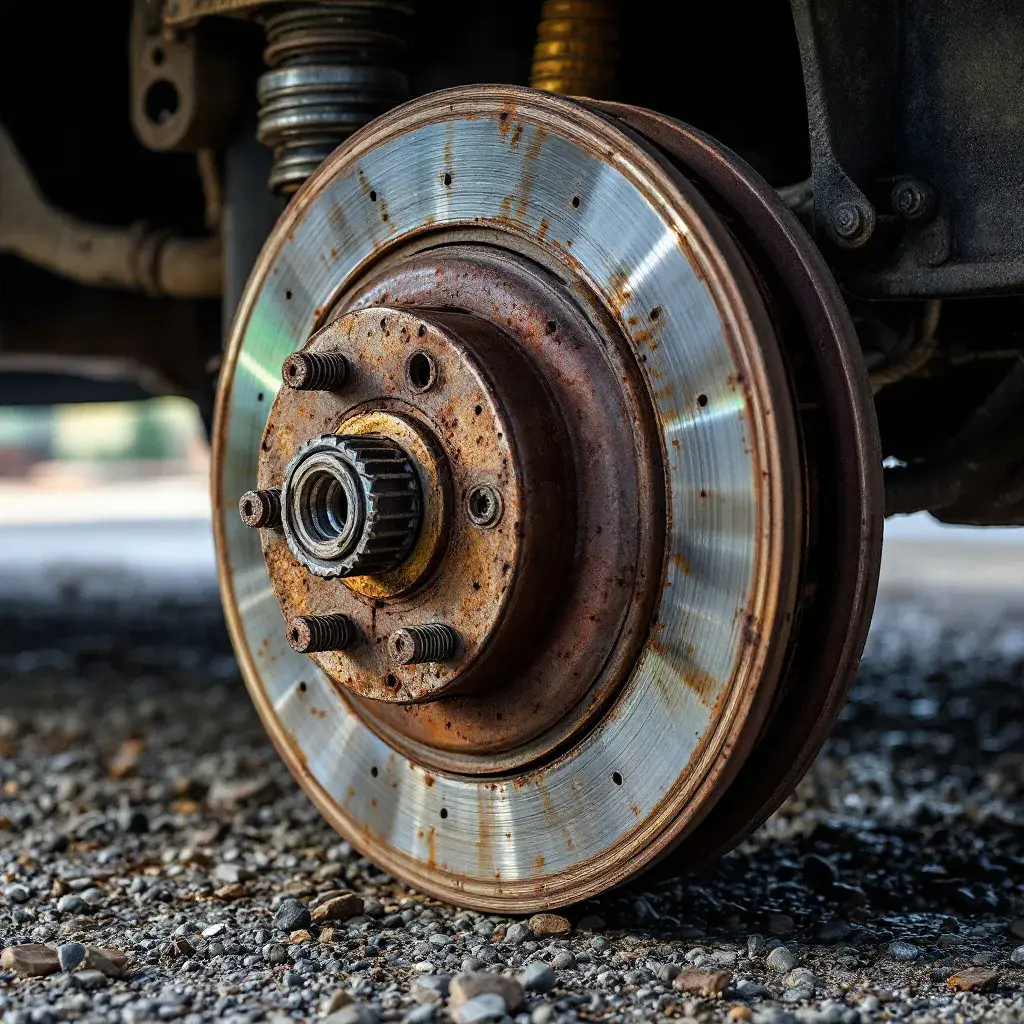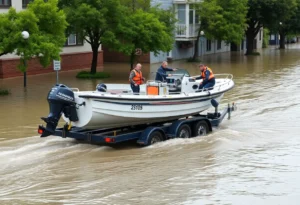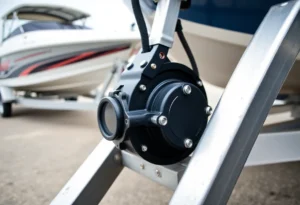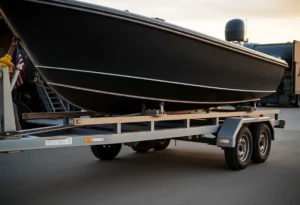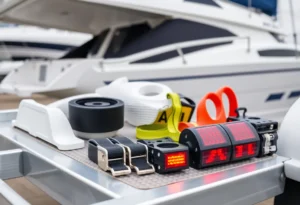Owning a boat trailer makes it easy to tow your boat to new destinations, whether for routine outings or extended trips. But for a smooth and safe journey, your trailer’s brake system must be in top shape. Regular maintenance and occasional repairs are essential for reliable performance and safe stops, especially when handling the increased weight of a boat.
In this guide, we’ll explore the steps to troubleshoot, repair, and maintain your boat trailer’s brakes to ensure dependable stopping power.
Understanding Boat Trailer Brakes
Boat trailers usually have either hydraulic surge brakes or electric over hydraulic (EOH) brakes. Surge brakes use a hydraulic actuator to apply braking force when the trailer pushes forward, while EOH brakes pair electric signals from your vehicle with hydraulic force. Each system has its benefits, but both require diligent upkeep to perform safely and effectively.
Step 1: Regular Inspections for Safety
Frequent inspections are the backbone of trailer brake maintenance. Here’s a simple checklist to help you catch issues early and prevent them from turning into costly repairs:
- Check Brake Pads and Shoes: Look for signs of wear, such as thinning pads or scoring. Pads that are too thin may need replacing.
- Inspect Rotors or Drums: Brake rotors or drums can show signs of corrosion, especially after exposure to water. Rusty or pitted rotors and drums can reduce braking power.
- Brake Fluid Levels: Hydraulic brake systems require fluid to function effectively. Check the fluid reservoir and top it off if necessary. If the fluid is murky or dark, consider replacing it entirely.
- Listen for Unusual Noises: Squealing or grinding sounds could indicate issues with the brake pads or other components.
Consistent inspections can help you avoid unexpected problems on the road and ensure smooth, reliable braking.
Step 2: Cleaning and Lubrication
Boat trailer brakes are frequently exposed to salt, dirt, and moisture, all of which can lead to corrosion. After every trip, especially if you’ve been in saltwater, it’s essential to rinse your brakes with fresh water to minimize corrosion. Avoid high-pressure hoses that could push water into sealed areas, leading to potential rusting or braking issues.
When cleaning, consider using a marine-specific cleaner to help dissolve any buildup on the brakes. Afterward, apply lubricant to moving parts such as the actuator and caliper slides. Be mindful not to get any lubricant on brake pads or rotors, as this can reduce braking effectiveness.
Step 3: Brake Fluid Maintenance
Brake fluid can degrade over time, reducing braking efficiency. If your trailer has a hydraulic system, it’s crucial to replace the brake fluid periodically. Here’s a quick guide:
- Check Fluid Quality: If the brake fluid appears dark or murky, it’s time for a change.
- Bleeding the System: Air can sometimes become trapped in the hydraulic lines, reducing braking efficiency. Bleed the brakes to remove any air pockets and keep the system performing well.
- Use the Correct Fluid: Always use the brake fluid recommended by the manufacturer to avoid damaging the system.
Replacing old brake fluid and bleeding the system ensures your trailer’s brakes remain responsive and effective.
Step 4: Replacing Brake Pads or Shoes
Over time, brake pads or shoes will wear down and need replacement. Here are some signs it’s time for new pads or shoes:
- Reduced Braking Power: If you notice you need to press harder to stop the trailer, the pads may be too thin.
- Visible Wear: Check for thinning pads or cracks. Pads that are less than 1/4 inch thick should be replaced.
- Pulling to One Side: If your trailer pulls to one side while braking, one of the brake pads may be worn more than the other, or there could be an issue with the caliper.
Replacing brake pads or shoes as they wear is essential for even braking and can help prevent other parts from wearing prematurely.
Step 5: Adjusting and Calibrating Brakes
For trailer brakes to function optimally, they need to be calibrated correctly. Brake adjustment is crucial to balance the braking power between the trailer and your towing vehicle.
- Surge Brakes: Adjust the actuator to ensure that the brakes engage smoothly without jerking. Ensure the brake line pressure matches the load for a balanced braking experience.
- EOH Brakes: If you’re using electric over hydraulic brakes, calibrate them with your vehicle’s brake controller for precise control. Many controllers allow for fine-tuning, so you can adjust braking sensitivity based on your load and towing needs.
Ensuring that the brakes are correctly calibrated will help you maintain control of your trailer, even in sudden stops or on inclines.
Step 6: Troubleshooting Common Brake Issues
Sometimes, issues with trailer brakes become apparent only when towing. Here are some common issues and tips on troubleshooting them:
- Soft or Spongy Brakes: This often indicates air in the brake lines. Bleed the brakes to restore firm, responsive braking.
- Brakes Overheating: Overheated brakes can result from dragging pads or malfunctioning calipers. Make sure all components move freely, and lubricate if needed.
- Noisy Brakes: Squeaking or grinding may suggest worn brake pads or shoes. If lubrication doesn’t resolve the noise, it may be time to replace the pads.
Addressing these issues promptly will improve your trailer’s reliability and ensure that your brakes perform smoothly, even in challenging conditions.
Final Thoughts
Regular brake maintenance and timely repairs are essential to ensure your boat trailer’s safety and performance. By following these steps and performing regular inspections, you can keep your trailer’s brake system in excellent condition, providing reliable braking power whenever you’re towing. Remember that preventive maintenance goes a long way in ensuring your trailer’s brakes are safe, reliable, and ready for any adventure.
Keeping your boat trailer in peak condition isn’t just about performance—it’s about safety. With well-maintained brakes, you can enjoy peace of mind, knowing that your trailer will respond when you need it most.

